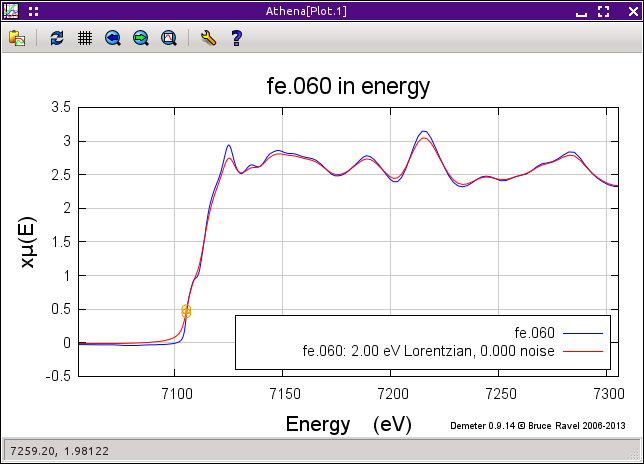9.7. Convoluting data groups¶
This is one of ATHENA's odder tools. It takes perfectly fine normalized μ(E) data and makes it worse by adding artificial broadening, artificial noise, or both. The broadening can be a Gaussian or a Lorentzian convolution by the selected width in energy. The noise is randomly generated using an epsilon that is chosen as a fraction of the size of the edge step.
Like other tools, there is a button for plotting the data along with its modification and another for turning the modified data into a data group listed in the group list. These are shown in this screenshot. An example of broadened data is shown in on the left in the next figure and an example of data with artificial noise is shown on the right.
DEMETER is copyright © 2009-2016 Bruce Ravel – This document is copyright © 2016 Bruce Ravel
This document is licensed under The Creative Commons Attribution-ShareAlike License.
If DEMETER and this document are useful to you, please consider supporting The Creative Commons.



